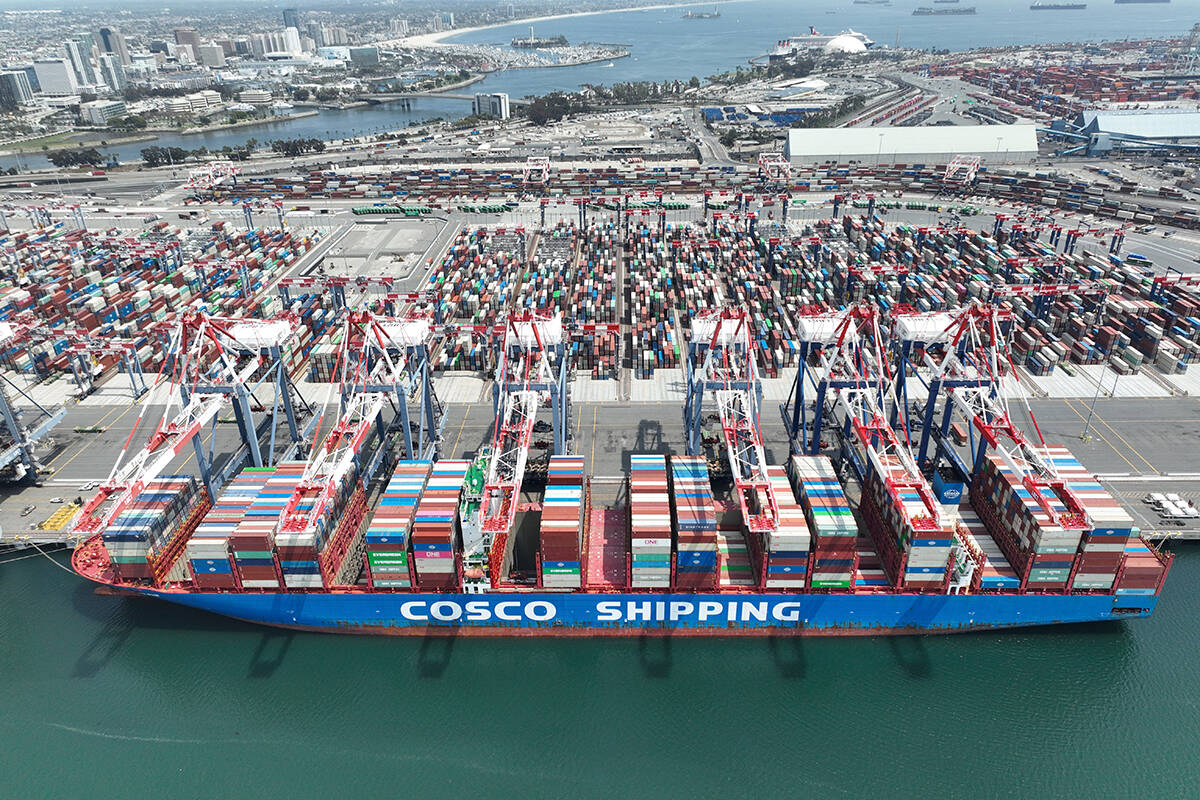Proposed changes worse | Labelling plan will force U.S. packers to avoid buying foreign animals
Manitoba’s weanling hog producers are feeling disgust, despair, outrage, resignation and, above all, frustration as they question whether they are in a viable industry with a future.
The long trade war with the United States appears no closer to an end than it was months ago, when the World Trade Organization handed the industry an apparent victory that many believed would end the crippling situation.
“It makes it worse and just puts more pressure on (U.S.) packers not to buy foreign-born animals,” Manitoba Pork Council general manager Andrew Dickson said a few days after the U.S. Department of Agriculture revealed its proposed country-of-origin labelling amendments.
Read Also

U.S. softens fees on Chinese shipping
The U.S. starts charging new fees on Chinese ships on Oct. 14. What are the ramifications for their ag exports?
“It doesn’t address the issue the WTO ruled on.”
Dickson’s opinion was echoed by virtually all Canadian pork and agriculture industries, the federal and provincial governments and major U.S. pig, cattle and meat processing organizations.
COOL’s trade-distorting effects are likely to become more extreme if the USDA does not change its proposal by May 23 because it eliminates much of the flexibility presently given to U.S. packers.
The proposed rule would force a total segregation of U.S.-born and Canadian-born animals so that food labels can clearly state where the animals were born, raised and slaughtered. It would also get rid of the one acceptable label that now describes meat as being a product of either the U.S. or Canada.
The new rules would require each stage of the animal’s life to be de-tailed, forcing different labelling for entirely U.S. animals, entirely foreign animals and animals with mixed histories.
Many elements of Canada’s livestock industry are affected by the proposed changes, including slaughter hogs, feeder cattle, slaughter cattle and breeding stock, although most of them would be redirected into the Canadian domestic market.
However, weanling hog producers generally don’t have domestic alternatives. The millions of weanlings produced in southern Manitoba are designed to meet the needs of Minnesota and Iowa hog producers, who are in closer proximity to Manitoba than to the western Prairies or Ontario and Quebec.
As well, Manitoba’s moratorium on new hog barn construction doesn’t allow weanling producers to build new feeder barns in the province, and getting hog barn approvals in other provinces is a time-consuming process.
Weanling producers suffered great financial losses when COOL was first imposed in 2009 as U.S. farmers slashed their imports of Canadian piglets. However, sales resumed as the U.S. industry learned to live with the new rules.
Dickson said Manitoba’s exports fell to almost zero for a few weeks from a pre-COOL rate of 120,000 piglets per week and have since crept back up to 65,000 per week.
Manitoba’s pre-COOL slaughter hog exports have also slumped, falling to 165,000 hogs per year, mostly sows, from a one-time rate of one million.
Packers organized their plants so that some would mostly or entirely buy Canadian or mixed U.S. and Canadian pigs, while others would process only U.S. born and raised pigs. Farmers learned to live with new delivery schedules and more record-keeping.
However, Canadians fear that the new proposed rule could prompt some packing plants to stop taking Canadian pigs and possibly cause some to close.
University of Missouri hog industry analyst Ron Plain said Canadian-born pigs comprise only four to four-and-a half percent of U.S. slaughter hogs, which could be considered small. However, that isn’t true for certain regions of the U.S., where Canadian-born pigs make up a sizeable chunk of the slaughter flow.
“Packers in the upper Midwest have a much higher percentage,” said Plain. “It’s not evenly spread across the country.”
Maple Leaf’s slaughter plant in Brandon added its second shift the same year COOL was imposed, but that hasn’t helped weanling producers. They must wait for the May 23 deadline to see how their weanlings will be treated and then live with the new reality as long as it lasts.

















